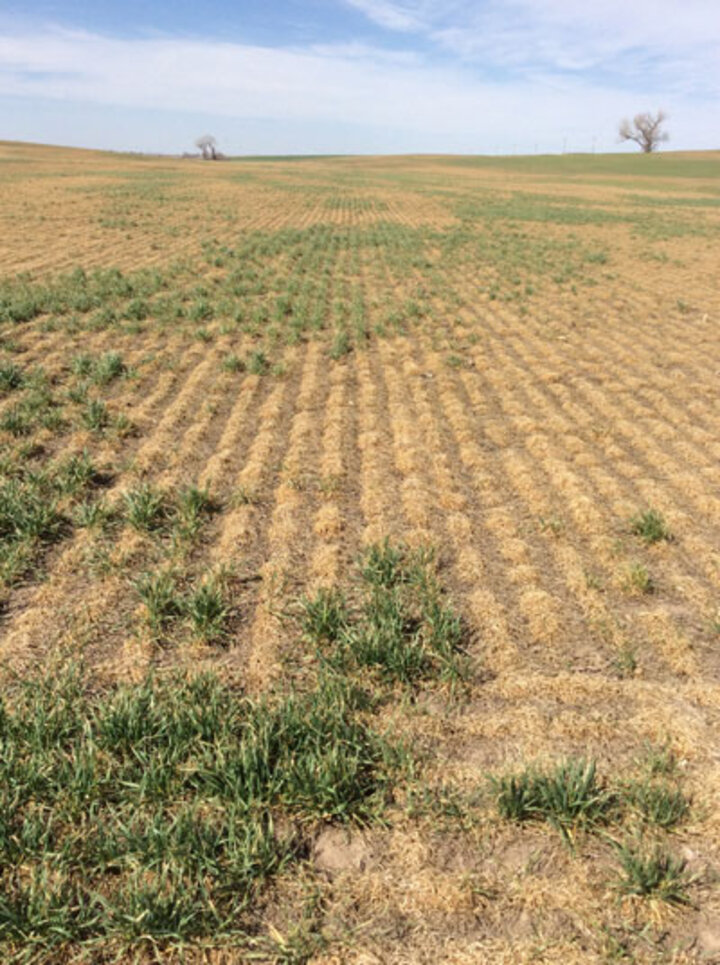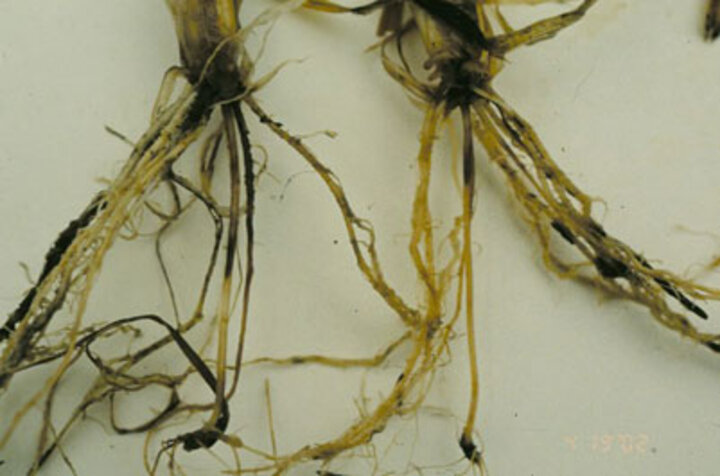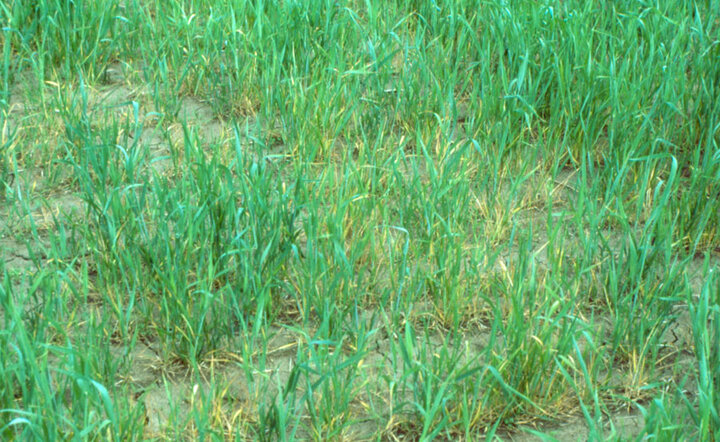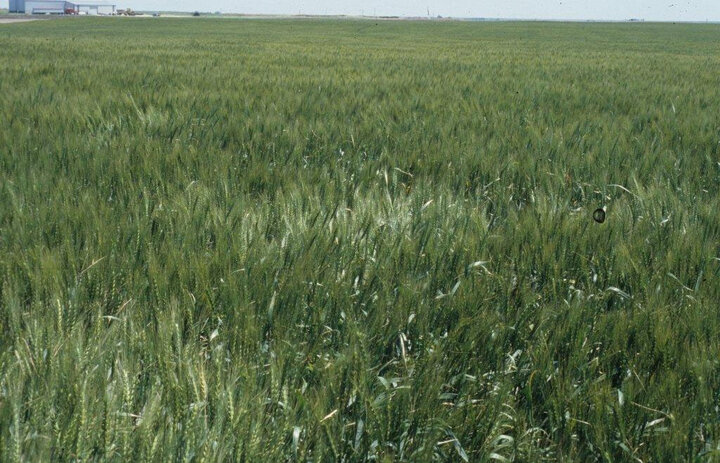
Figure 1. Severe winter injury in a field in southeast Nebraska on April 14, 2015.
Differentiating Symptoms of Soilborne Diseases from Winter Injury in Wheat
May 13, 2015
Widespread winter injury in western Nebraska winter wheat creates favorable conditions for higher levels of soilborne disease problems this season. The injury that occurred in many field locations across the state (Figure 1) has reduced the vigor of winter wheat. This will make it easier for pathogens to attack plant roots and crown, causing soilborne diseases and the resulting infections to further hinder root growth and development.
For some infections that might have occurred earlier by pathogens such as Pythium or Rhizoctonia, the winter injury will make it almost impossible for plants to recover or outgrow the disease. It is important for growers to know how to identify the symptoms of the most likely soilborne diseases, so they do not confuse winter kill with other issues. Accurate diagnosis is critical in applying the correct crop management strategies in the current as well as the next growing season and avoiding an unneeded costly management action.
The following describes symptoms of possible soilborne pathogens.


Figure 2 (left). Cephalosporium stripe on the upper side of a leaf. (Photo by Stephen Wegulo). Figure 3. Common root rot showing discoloration on the subcrown internodes and rotting of the crown. (Photo by Robert Harveson)


-
Cephalosporium stripe. Infected leaves may initially show mosaic-like yellowing, which will be followed by the appearance of chlorotic longitudinal stripe on many leaves during jointing and heading. The yellow stripe will become prominent, running from the leaf blade to the sheath (Figure 2) and the veins are often darkened.
-
Common root and foot rots. Dark brown to black lesions on roots, sub-crown internodes, and stem bases. Lesions may merge, forming large areas of dead tissue in the crown. Discoloration of the sub-crown internode (Figure 3) is diagnostic for common root rot. Primary or secondary roots may appear brown or blackened.
-
Fusarium root, crown, and foot rots. Scattered patches of chlorotic (Figure 4), dead and dying plants may be seen in affected wheat fields. A diagnostic symptom of Fusarium foot rot is a cottony pink mycelium that may appear on affected stem bases. Dark brown lesions around the node of mature plants and the whole stem base may become girdled by a dark brown lesion.
-
Pythium root rot. Symptoms are likely to be more uniformly distributed in the field than symptoms of other soilborne diseases, but are also subtle and may not be easily noticed. Symptoms could include stunting, yellowing, and missing plants and those that may look nitrogen-deficient, have poor tillers, and poorly filled heads.
-
Rhizoctonia root rot. Patches of stunted or missing/dead (bare patch) plants should not be confused with winter killed areas. When you dig up the plants, root ends could appear reddish brown and taper to a fine point, which is a diagnostic symptom of this disease. Also, the root could appear constricted or pinched. In fields where infections might have occurred before winter injury, it is not likely that plants can outgrow the disease.
- Take-all. Symptoms include stunting, plants with few tillers, and chlorosis. Other symptoms will become obvious near heading as plants can die prematurely and have white heads from distinct bleaching (Figure 5). Premature heads may contain shriveled grain and become darkened from secondary infection. Affected plants will pull up easily or break near the soil line and the roots will appear sparse, blackened, and brittle.
Extension Plant Pathologist, West Central REC
